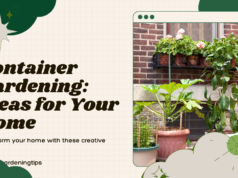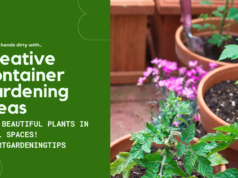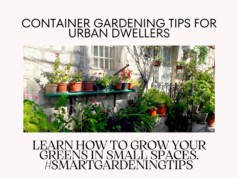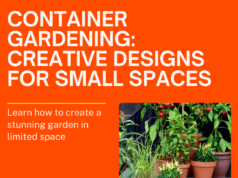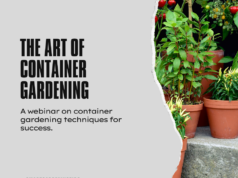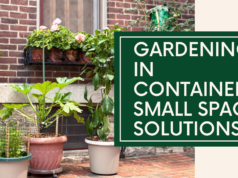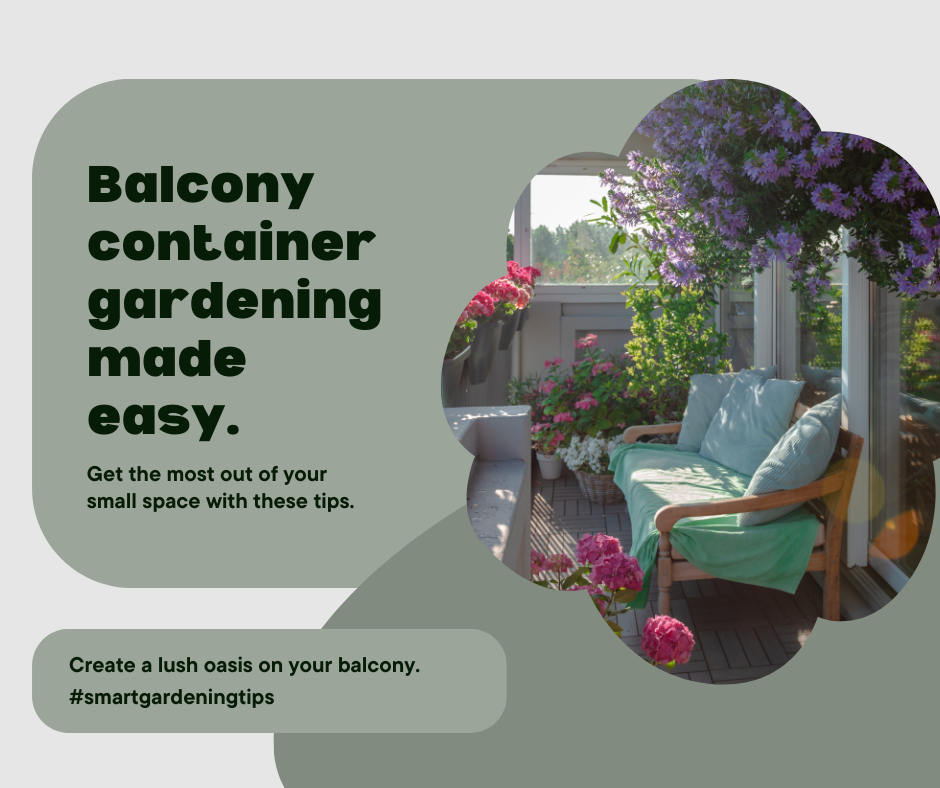
Welcome to an exciting world of urban gardening! If you have a balcony, you have the perfect opportunity to create a lush oasis right in the heart of the city. With a little creativity and the right techniques, balcony container gardening can transform your space into a green and vibrant haven. In this article, we will explore practical tips and techniques to help you make the most of your balcony garden.
Key Takeaways:
- Embrace the potential of your urban space with balcony container gardening
- Discover practical tips for creating a lush oasis on your balcony
- Choose the right plants, containers, and soil for your balcony garden
- Learn watering and maintenance strategies to keep your plants healthy
- Get inspired by creative design ideas to maximize your balcony space
Benefits of Balcony Container Gardening
Embarking on a balcony container gardening journey brings forth a multitude of benefits, particularly in urban settings. From creating a picturesque oasis on your balcony to enhancing the overall ambience of your living space, this rewarding and sustainable hobby has so much to offer. So, let’s delve into the advantages of balcony container gardening and explore why it is becoming increasingly popular in urban areas.
Enhances Urban Spaces
One of the primary benefits of balcony container gardening in urban settings is the ability to transform ordinary spaces into vibrant green havens. Regardless of the size of your balcony, whether it’s a cozy corner or a sprawling terrace, you can revitalize it with cascading foliage, colorful blooms, and lush greenery. The sight of blooming flowers and thriving plants adds a touch of natural beauty to the concrete jungle, creating an oasis where you can relax and unwind.
Improves Air Quality
Living in an urban environment often means contending with pollution and limited access to fresh air. However, with balcony container gardening, you can have your personal source of fresh air right outside your doorstep. Plants absorb carbon dioxide and release oxygen, improving the air quality on your balcony and even extending their positive effects to the surrounding environment. By nurturing a diverse range of plants, you contribute to a cleaner and healthier atmosphere.
Reduces Stress and Enhances Well-being
Spending time in nature has been proven to reduce stress levels and improve overall well-being. Imagine stepping onto your balcony and being greeted by the soothing sight of greenery and the gentle rustle of leaves. Engaging in balcony container gardening provides an opportunity for you to escape the stresses of daily life and connect with nature. Whether you’re tending to your plants or simply enjoying your balcony oasis, this hobby offers a peaceful sanctuary where you can recharge and find solace.
Encourages Sustainability
Balcony container gardening promotes sustainable living by fostering a connection with the natural world and encouraging self-sufficiency. By growing your own herbs, vegetables, and fruits, you reduce your reliance on store-bought produce that often involves packaging, transportation, and a significant carbon footprint. Additionally, balcony gardening allows you to embrace organic and pesticide-free cultivation practices, promoting biodiversity and contributing to a greener future.
“Balcony container gardening provides a rewarding and sustainable way to connect with nature and create a tranquil oasis in the heart of the city.”
Now that you’re familiar with the significant benefits of balcony container gardening, it’s time to embark on your own urban gardening adventure. Transform your balcony into a lush and inviting space, reap the rewards of fresh air and stress reduction, and contribute to a more sustainable future.
Importance of Using Containers for Balcony Gardening
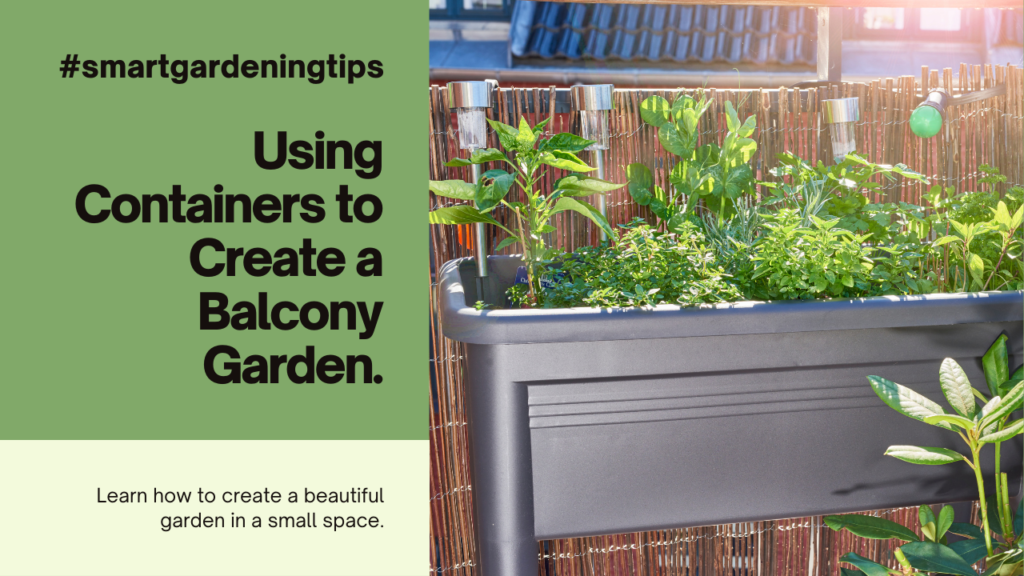
When it comes to balcony gardening, using containers is of utmost importance. Not only do containers provide an organized and manageable space for your plants, but they also offer several other advantages that contribute to the success of your balcony garden.
Containers allow you to control the growing environment, ensuring that your plants have the right conditions for healthy growth. By choosing the appropriate containers, you can create optimum growing conditions for different plant varieties and maximize your balcony space.
One of the key benefits of using containers is the ability to choose your soil. Good soil quality is essential for healthy plant growth, and containers give you the freedom to select the right soil mix for your specific plant needs. Whether you prefer a well-draining soil mix for succulents or a nutrient-rich potting mix for vegetables, having control over the soil composition is crucial for the success of your balcony garden.
“Containers provide an organized and manageable space for your plants.”
Another advantage of using containers is the ability to move your plants around easily. This flexibility allows you to optimize sunlight exposure and adapt to changing weather conditions. By choosing containers with built-in wheels or lightweight materials, you can effortlessly rearrange your balcony garden to ensure each plant receives the right amount of sunlight for its specific needs.
When selecting containers for your balcony garden, it’s important to consider a few factors. Firstly, the size of the container should be adequate for the plant’s root system to ensure proper growth and development. Additionally, choosing containers with drainage holes is essential to prevent waterlogging and root rot.
Depending on the style and aesthetic you want to achieve, you can choose from a wide range of container materials including plastic, ceramic, metal, or even repurposed items like buckets or wooden crates. Each material has its own advantages and considerations, so it’s important to choose based on your specific needs and preferences.
Now that you understand the importance of using containers for balcony gardening, you can create a thriving garden space on your balcony. With the right containers and soil, you’ll be able to enjoy the beauty and benefits of plants in your urban oasis.
Choosing the Right Containers for Your Balcony Garden
When selecting containers for your balcony garden, it’s important to consider factors such as size, drainage, and material. Here are some popular container options:
| Container Type | Advantages |
|---|---|
| Terra cotta pots | Provide breathability, classic look |
| Plastic containers | Lightweight, affordable, retain moisture |
| Fabric pots | Promote better airflow and root health |
| Hanging baskets | Save space, add decorative appeal |
Selecting the Ideal Plants for Balcony Container Gardening
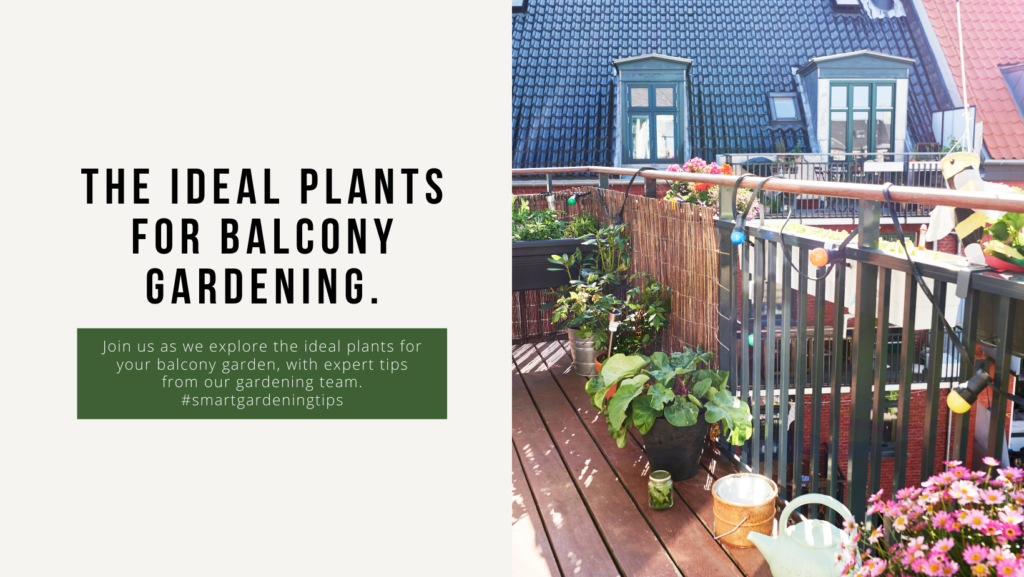
When it comes to balcony container gardening, selecting the right plants is crucial for creating a thriving and beautiful garden. Whether you have a small balcony or a spacious terrace, choosing low-maintenance plants suitable for balcony containers is the key to success. Additionally, understanding the varied sunlight conditions on balconies will help you explore different plant options and create a well-balanced garden.
Choosing Low-Maintenance Plants
One of the main considerations when selecting plants for your balcony container garden is their maintenance requirements. Opting for low-maintenance plants not only saves you time and effort but also ensures that your plants thrive in the limited space provided by containers.
- Look for plants that are drought-tolerant and can withstand fluctuations in watering.
- Consider plants that have compact growth habits and don’t require frequent pruning or shaping.
- Choose plants that are resistant to pests and diseases to minimize the need for frequent treatments.
Exploring Different Plant Options
Balconies can have varying sunlight conditions throughout the day, depending on their orientation and surrounding buildings. It’s essential to choose plants that thrive in the amount of sunlight your balcony receives to ensure their growth and vitality.
- If your balcony receives full sun for a significant part of the day, consider sun-loving plants like petunias, geraniums, or marigolds.
- For balconies with partial shade, plants such as impatiens, begonias, or fuchsias are excellent choices.
- In balconies with limited direct sunlight, opt for shade-tolerant plants like ferns, hostas, or coleus.
By exploring different plant options and carefully considering their suitability for your balcony’s sunlight conditions, you can create a vibrant and flourishing balcony container garden.
Watering and Maintenance Tips for Balcony Container Gardens
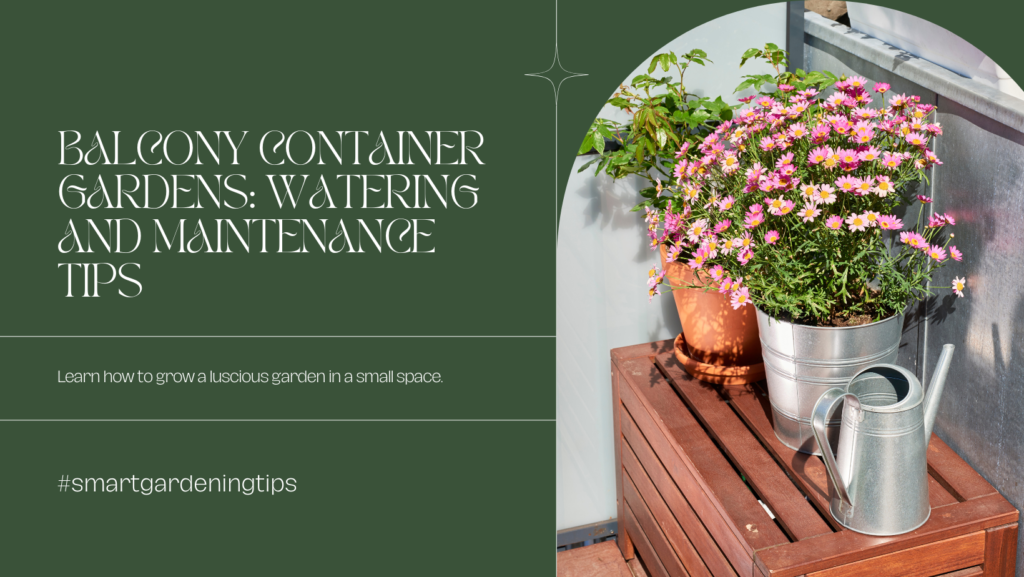
When it comes to balcony container gardening, proper watering and maintenance practices are essential for the health and growth of your plants. By understanding the watering needs of plants in containers and implementing effective maintenance strategies, you can ensure that your balcony garden thrives. Here are some valuable tips to help you maintain a flourishing oasis on your balcony:
- Know your plants’ watering needs: Different plants have different watering requirements. Some plants prefer to dry out slightly between watering, while others thrive in consistently moist soil. Research your specific plant varieties to determine their watering needs, and adjust your watering schedule accordingly.
- Observe and test the soil: Monitor the moisture level of your plant’s soil regularly. Stick your finger into the soil up to the first knuckle to assess its dryness. If the soil feels dry at this depth, it’s time to water your plants. Consider using a soil moisture meter for a more accurate reading.
- Water thoroughly: When watering your container plants, aim for a thorough soaking. Ensure that water reaches the entire root system by watering until you see it draining from the bottom of the container. This helps to flush out excess salts and promotes healthy root growth.
- Be mindful of container drainage: Proper drainage is crucial to prevent waterlogging, which can lead to root rot. Choose containers with drainage holes and use well-draining potting soil to prevent water from pooling at the bottom.
- Establish a watering schedule: Consistency is key when it comes to watering your balcony container garden. Establish a watering schedule based on your plants’ needs and the climate in your area. Consider factors such as temperature, humidity, and seasonality to adjust your watering routine accordingly.
Aside from watering, regular maintenance practices will contribute to the overall health and vibrancy of your balcony garden. Here are some additional maintenance tips:
- Remove dead or wilted foliage: Regularly inspect your plants and remove any dead or wilted foliage. This not only improves the appearance of your garden but also helps prevent the spread of diseases and pests.
- Prune and shape your plants: Pruning encourages bushier growth and helps maintain the shape and size of your plants. Trim back overgrown branches to promote new growth and remove any weak or damaged stems.
- Fertilize appropriately: Depending on the type of plants you’re growing and the quality of your potting soil, periodic fertilization may be necessary. Choose a suitable fertilizer based on your plants’ nutrient requirements, and follow the instructions for application.
- Monitor for pests: Keep a close eye out for common pests such as aphids, mealybugs, and spider mites. Regularly inspect your plants for signs of infestation and take immediate action to prevent the spread.
“Regular watering and proper maintenance are essential for a flourishing balcony container garden. By understanding your plants’ watering needs and implementing effective maintenance practices, you can create a vibrant and thriving outdoor oasis right on your balcony.”
By following these watering and maintenance tips, you can ensure the health and growth of your balcony garden plants. Remember to stay attentive to your plants’ needs, adapt your care routine as necessary, and enjoy the beauty and tranquility that a well-maintained balcony container garden brings.
Creative Design and Layout Ideas for Balcony Container Gardens
When it comes to balcony container gardening, the design and layout of your space can make a significant impact on its overall appeal. By exploring creative ideas and incorporating innovative techniques, you can transform your balcony into a stunning oasis that maximizes space and captivates the eye.
One of the most effective ways to make the most of your balcony garden is by utilizing vertical gardening techniques. Vertical gardening allows you to grow plants vertically instead of just horizontally, helping you maximize the use of limited space. Consider installing trellises, wall-mounted planters, or hanging baskets to create a lush green wall that not only adds visual interest but also increases the number of plants you can grow.
In addition to vertical gardening, incorporating decorative elements can enhance the visual appeal of your balcony container garden. Consider adding colorful artwork, ornamental statues, or decorative screens to create focal points and add personality to your space. You can also incorporate lighting fixtures, such as string lights or lanterns, to create a cozy and inviting atmosphere during the evenings.
In terms of plant selection, mix and match different colors, textures, and heights to create an aesthetically pleasing arrangement. Experiment with different combinations of flowers, foliage plants, and even herbs. By incorporating a variety of plant types, you can create a vibrant and diverse balcony garden that is visually captivating.
Furthermore, consider the overall layout of your balcony garden. Think about the flow of the space and create designated areas for relaxation, dining, and gardening. Use outdoor furniture, plant stands, or elevated platforms to define these spaces and make them functional and inviting.
Remember, the key to creating a visually appealing balcony container garden is to strike a balance between functionality and aesthetics. Consider your personal taste and style preferences when designing your space, and don’t be afraid to experiment and get creative!
Choosing the Right Containers and Soil for Your Balcony Garden
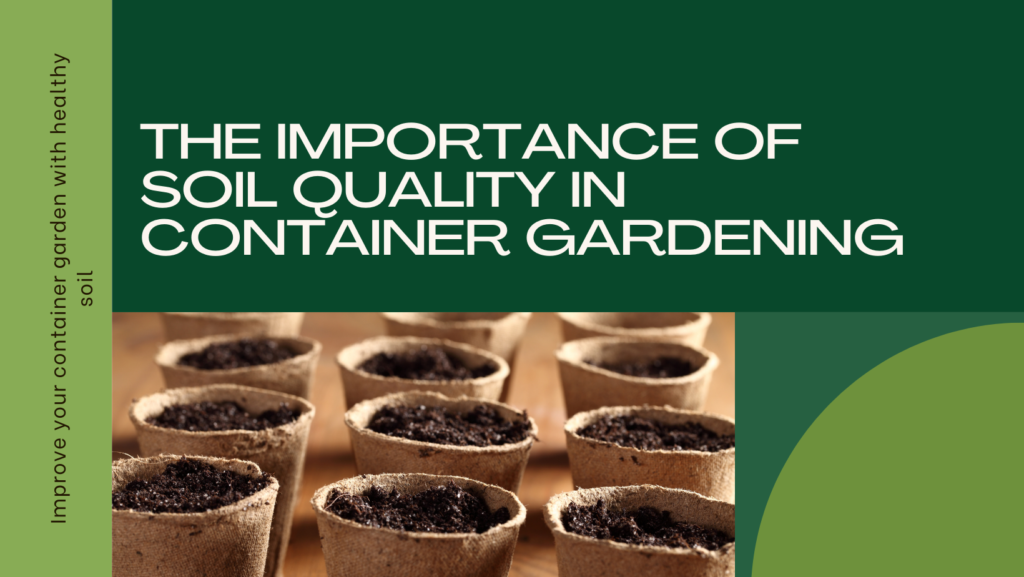
When it comes to creating a thriving balcony garden, selecting the right containers and soil is essential. The right choices will not only enhance the aesthetics of your garden but also contribute to the overall health and growth of your plants.
Understanding the Importance of Soil Quality in Container Gardening
A crucial factor in successful container gardening is soil quality. The soil in containers needs to provide proper drainage, aeration, and essential nutrients for your plants to thrive. It’s important to understand the needs of your specific plants and choose soil mixtures that cater to their requirements.
**Choosing the right soil for your balcony garden** is key. Opt for a high-quality potting mix that is well-draining and nutrient-rich. Look for mixtures specifically formulated for container gardening, as they often contain a blend of peat moss, perlite, and compost to provide optimal growing conditions.
Remember to also consider the pH levels of the soil. Some plants thrive in acidic conditions, while others prefer alkaline or neutral soil. Research the soil preferences of your chosen plants and adjust the pH levels accordingly.
Selecting the Appropriate Containers for Balcony Gardening
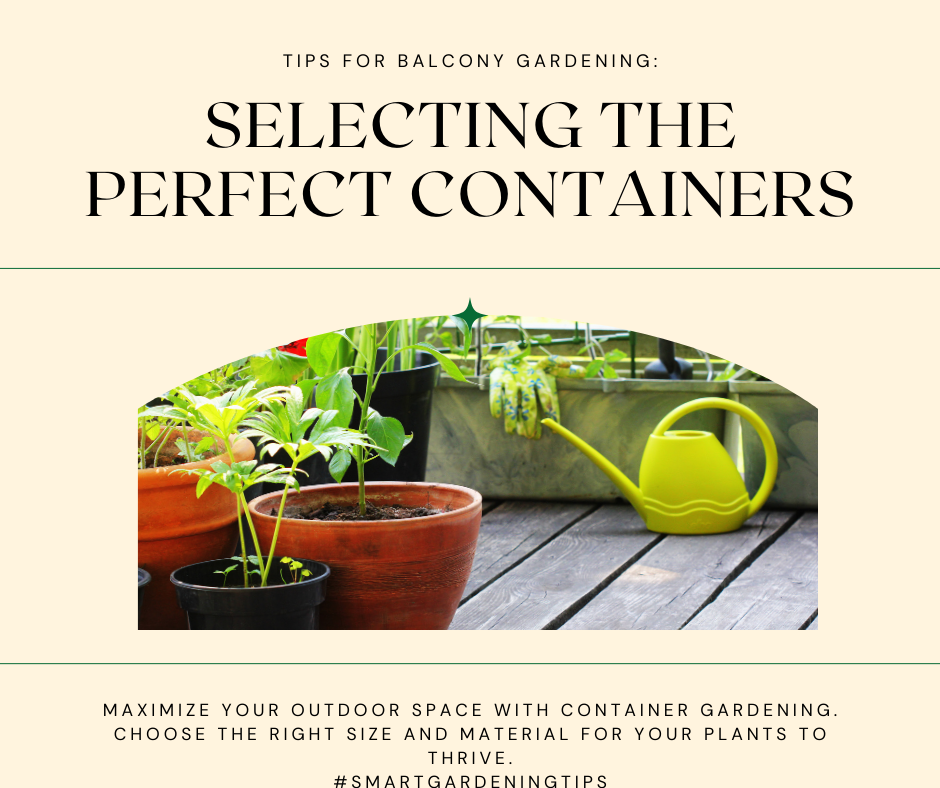
When it comes to choosing containers for your balcony garden, there are several factors to consider. The size, material, and drainage capabilities of the containers play a significant role in the success of your garden.
**Select containers that are appropriate for the size of your plants**. Small herbs may thrive in compact pots, while large vegetables or shrubs will require larger containers with ample space for root growth.
Material matters too. **Terracotta and clay pots** are popular choices as they are porous and allow for better airflow to the roots. However, they may dry out more quickly and require more frequent watering. **Plastic and resin** containers, on the other hand, are lightweight and retain moisture better, making them ideal for plants that require consistent moisture levels.
Consider the drainage capabilities of the containers as well. **Ensure that each container has sufficient drainage holes** to prevent waterlogging, which can lead to root rot. You can also place a layer of small rocks or broken pottery pieces at the bottom of the container to enhance drainage.
“The right choices will not only enhance the aesthetics of your garden but also contribute to the overall health and growth of your plants.”
To add a touch of creativity to your balcony garden, consider **mixing different container sizes, colors, and textures**. This will not only make your garden visually appealing but also allow you to accommodate various plant heights and growth habits.
| Container Materials | Features | Advantages |
|---|---|---|
| Terracotta or Clay | Porous | Better airflow to roots |
| Plastic or Resin | Lightweight, retain moisture | Ideal for consistent moisture levels |
Choosing the right containers and soil for your balcony garden is fundamental for creating a thriving and visually appealing space. By understanding the importance of soil quality and selecting containers that cater to your plants’ needs, you’ll be well on your way to enjoying a successful and bountiful balcony garden.
Maximizing Space with Vertical Gardening Techniques
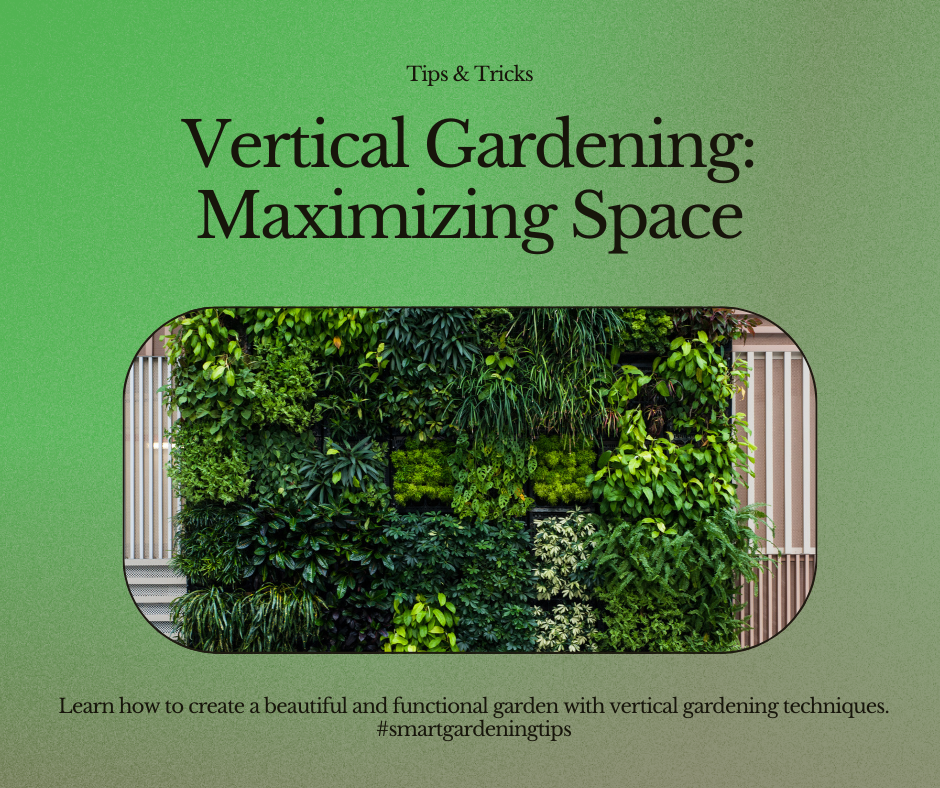
When it comes to balcony container gardening, space can be a precious commodity. But don’t let limited square footage hold you back from creating a bountiful garden. By utilizing vertical gardening techniques, you can maximize space and transform your balcony into a lush and vibrant oasis.
Vertical gardening involves growing plants vertically, rather than horizontally. This allows you to take advantage of the vertical space on your balcony, making room for more plants and creating a visually appealing display. Whether you have a small balcony or a larger one, vertical gardening techniques can help you make the most of your available space.
Vertical Planters
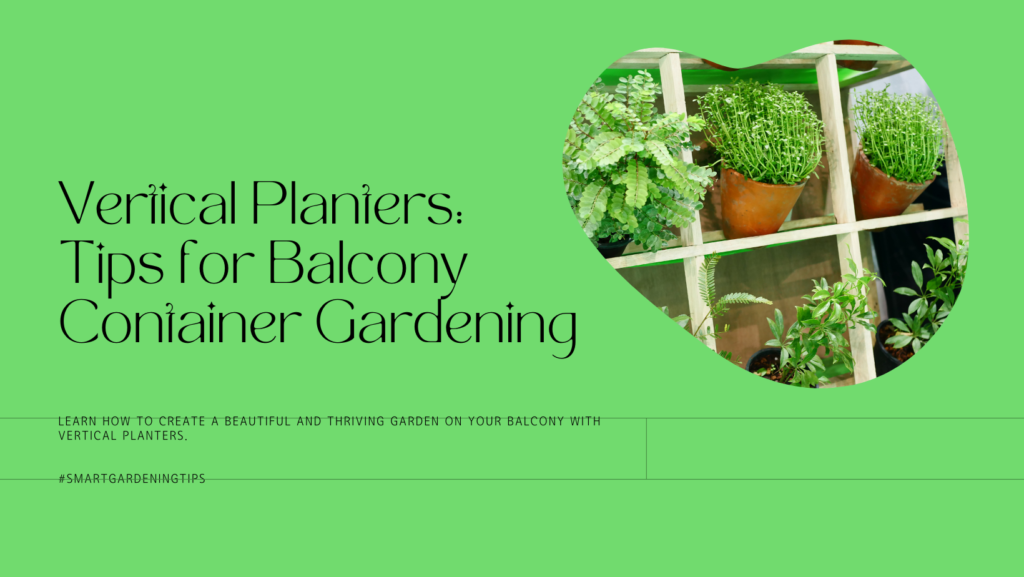
One popular technique for vertical gardening is to use vertical planters. These specially designed containers have multiple levels or pockets where you can grow plants. They can be attached to a wall or hung from a balcony railing or other support structure.
Vertical planters come in various shapes and sizes, allowing you to choose the one that best fits your balcony space. Some even feature built-in irrigation systems, making it easier to water your plants. With vertical planters, you can grow a variety of herbs, flowers, and even vegetables, all while maximizing your balcony’s space.
Vertical Trellises
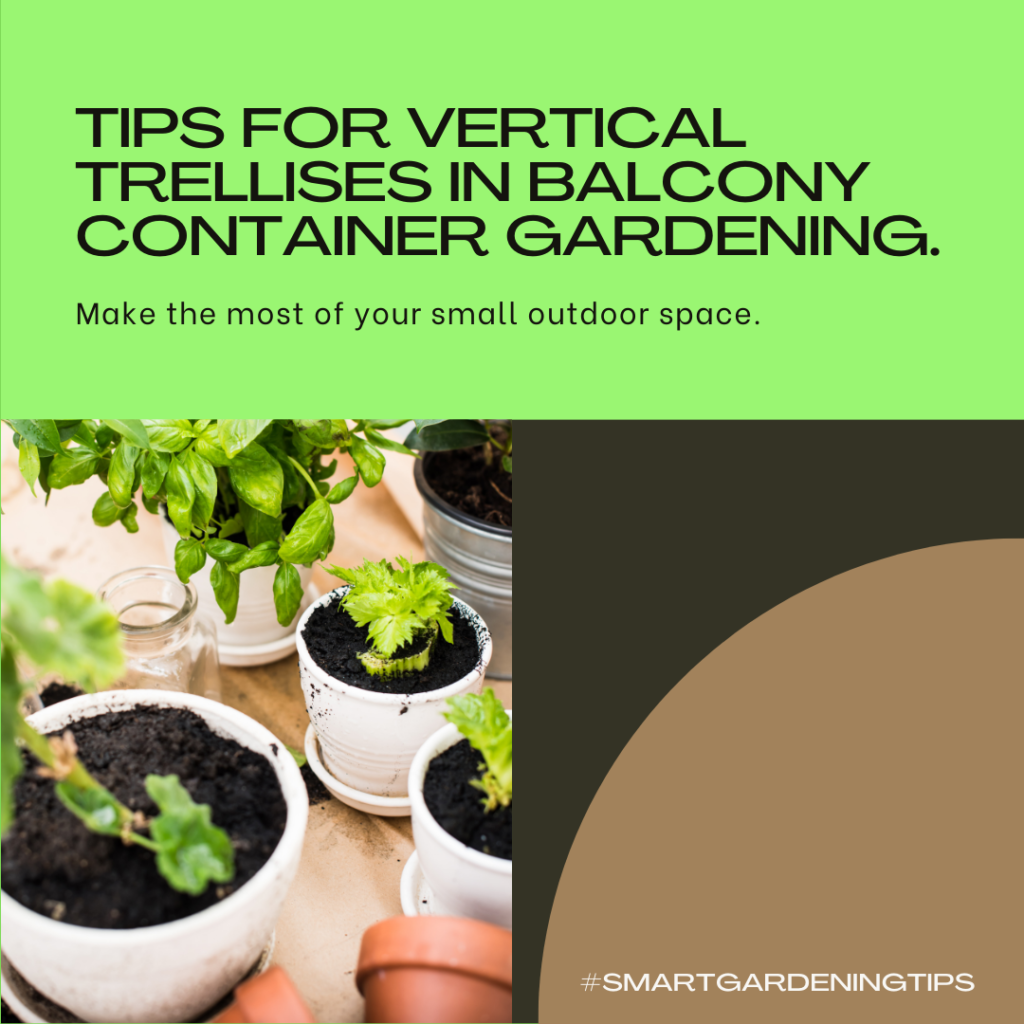
Another effective method for vertical gardening is to use trellises. By installing trellises on your balcony walls or attaching them to your railing, you can create a beautiful vertical display of climbing plants.
Climbing plants, such as vine tomatoes or jasmine, can be trained to grow upward along the trellis, saving valuable space on your balcony floor. Additionally, trellises provide visual interest and can serve as privacy screens, adding beauty and functionality to your balcony garden.
Hanging Baskets
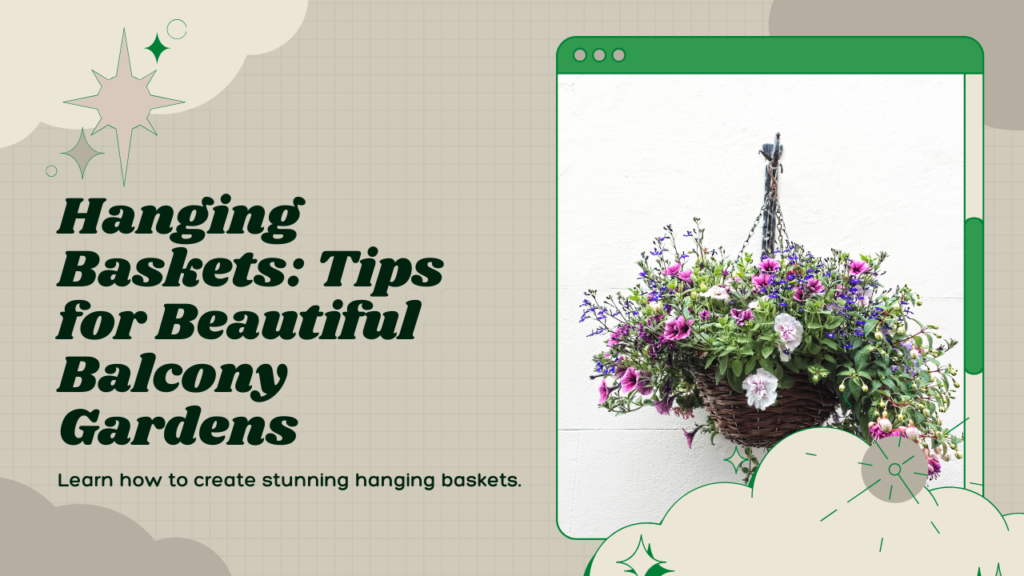
Utilizing hanging baskets is another excellent way to maximize vertical space on your balcony. By suspending baskets from the ceiling or beneath your balcony railing, you can grow a variety of trailing plants, such as ivy or petunias.
Not only do hanging baskets add color and dimension to your balcony, but they also make use of the empty air space, allowing you to bring your garden up to eye level. Choose baskets that are lightweight and consider installing a pulley system for easy maintenance and adjustment of your hanging baskets.
Vertical Gardening Techniques
| Technique | Description |
|---|---|
| Vertical Planters | Specially designed containers with multiple levels or pockets for growing plants vertically. |
| Vertical Trellises | Support structures attached to walls or railings that allow climbing plants to grow vertically. |
| Hanging Baskets | Baskets suspended from the ceiling or balcony railing that allow trailing plants to grow vertically. |
By implementing these vertical gardening techniques, you can make the most of your balcony space and create a stunning garden that defies its size. Whether you choose vertical planters, trellises, or hanging baskets, remember to select plants that are well-suited to vertical growth.
Experiment with different arrangements and combinations of plants to create an impressive and efficient balcony garden. With a little creativity and the right techniques, you can transform your balcony into a flourishing green sanctuary.
FAQ
Q. What are the benefits of balcony container gardening?
A. Balcony container gardening offers a range of benefits, especially in urban settings. It allows you to beautify your space, create a lush oasis, and enjoy the therapeutic benefits of gardening. Additionally, balcony gardens can provide fresh air, reduce stress, and even provide a source of homegrown produce.
Q. Why is it important to use containers for balcony gardening?
A. Using containers is essential for balcony gardening as they provide a controlled environment for your plants. Containers allow you to overcome limited space, protect your balcony surface from damage, and have better control over soil quality. They enable you to move your plants easily, experiment with different layouts, and even bring them indoors during extreme weather conditions.
Q. How do I choose the right containers and soil for my balcony garden?
A. When selecting containers for your balcony garden, consider the size, material, and drainage capabilities. Lightweight containers made of plastic or fiberglass are ideal for balconies as they are easy to move and don’t put excess weight on the floor. As for soil, choose a high-quality potting mix that is well-draining and nutrient-rich to promote healthy plant growth.
Q. Which plants are ideal for balcony container gardening?
A. The ideal plants for balcony container gardening are low-maintenance varieties that can thrive in the limited space and variable sunlight conditions. Some popular choices include herbs like basil and thyme, leafy greens like lettuce and spinach, compact fruits like tomatoes and strawberries, and colorful flowers like pansies and petunias. Choose plants that suit your preferences and the sunlight levels on your balcony.
Q. How do I water and maintain plants in my balcony container garden?
A. Proper watering and maintenance are crucial for the health and growth of your balcony garden plants. Water your plants thoroughly whenever the top inch of soil feels dry, but make sure not to overwater. Regularly monitor the drainage and soil moisture levels to avoid waterlogging. Additionally, remove dead or wilted leaves, fertilize as needed, and regularly inspect for pests or diseases.
Q. Do you have any creative design and layout ideas for balcony container gardens?
A. Absolutely! You can maximize space on your balcony by utilizing vertical gardening techniques, such as installing trellises, shelves, or hanging baskets. This allows you to grow more plants while keeping the area organized and visually appealing. You can also incorporate decorative elements like colorful pots, garden ornaments, and ornamental grasses to enhance the aesthetic appeal of your balcony garden.
Q. How can I maximize space with vertical gardening techniques on my balcony?
A. Vertical gardening techniques are excellent for maximizing space on your balcony. You can hang planters or baskets from railings, use wall-mounted racks or shelves, or create a vertical trellis system for climbing plants like ivy or jasmine. This not only adds greenery but also adds privacy and creates a beautiful backdrop for your balcony garden.
Q. How can I ensure the best soil quality for my balcony garden plants?
A. To ensure the best soil quality for your balcony garden plants, choose a high-quality potting mix specifically formulated for container gardening. Avoid using garden soil, as it may not have the right composition or drainage properties. Additionally, consider regularly feeding your plants with organic fertilizers to replenish nutrients and maintain their overall health.
Conclusion
In conclusion, balcony container gardening is a fantastic way to bring nature into your urban space. By following the practical tips and techniques shared in this article, you can transform your balcony into a lush oasis that offers a refreshing escape from the hustle and bustle of the city.
Whether you have a small balcony or a spacious terrace, balcony gardening has numerous benefits for urban dwellers like you. It not only beautifies your space but also provides fresh air, reduces stress, and enhances your overall well-being.
With balcony container gardening, the possibilities are endless. From choosing the right plants for your balcony’s unique sunlight conditions to maximizing space with vertical gardening techniques, you can unleash your creativity and create a personalized green space that reflects your style and connection with nature.
So, why wait? Start your own balcony container garden today and experience the tranquility and beauty it brings to your urban lifestyle. Enjoy the satisfaction of nurturing and growing your own plants, and reap the rewards of a thriving and vibrant balcony garden.


